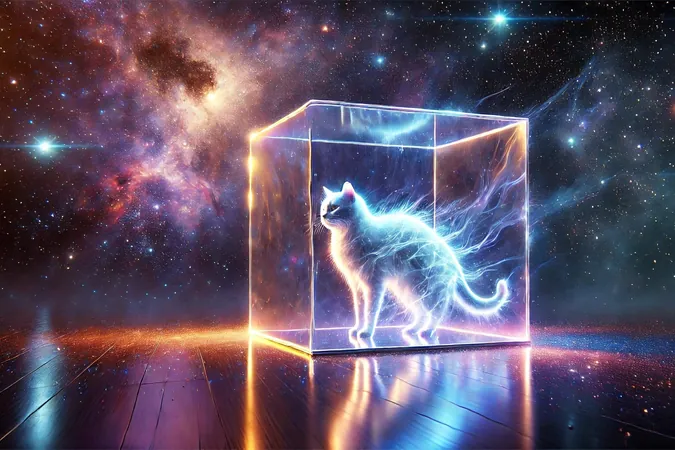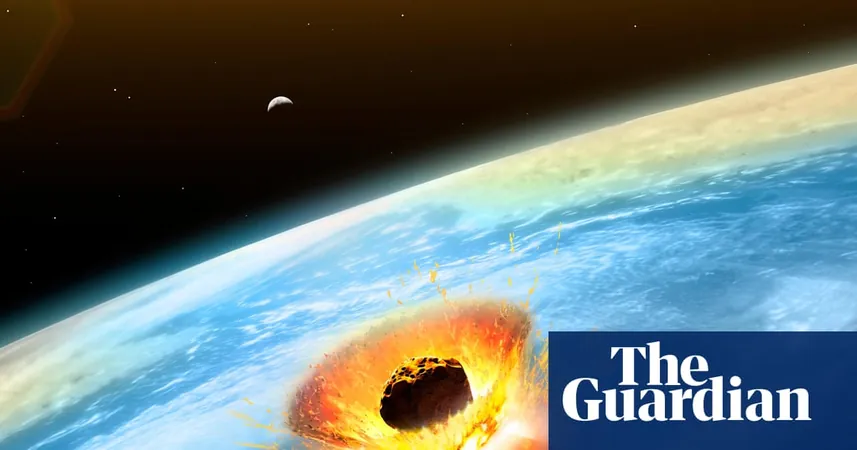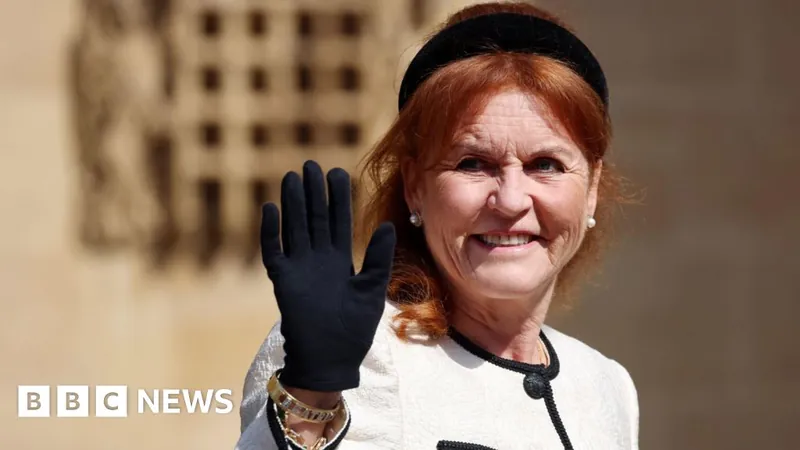
Is Our Universe the Result of a Self-Collapse? New Theory Tackles Schrödinger’s Cat Conundrum
2025-07-10
Author: William
Quantum Mechanics: The Enigma of Superposition
In the baffling realm of quantum mechanics, particles can exist in multiple states simultaneously, a curious phenomenon known as superposition. A prime example is a particle that can spin in various directions until a measurement is made, seemingly existing in multiple realities at once.
However, in our everyday lives, this quirky behavior seems to vanish. Cats roam as either alive or dead, and galaxies swirl about according to Einstein’s classical laws of relativity. This intriguing discrepancy raises a burning question: what triggers the metamorphosis from quantum oddities to the classical behaviors we observe?
Unlocking the Mystery: A New Approach
For decades, this question has plagued scientists. A groundbreaking study spearheaded by Matteo Carlesso from the University of Trieste offers an intriguing proposition. Published in the Journal of High Energy Physics, the research suggests a modified quantum mechanics framework, allowing the universe to seamlessly transition from bewildering quantum dynamics to orderly classical phenomena.
Rather than relying on an external observer to collapse superpositions into a single reality, this new approach introduces the idea of self-induced collapse. In this model, systems interact with themselves, naturally settling into one state. This concept suggests a fascinating answer to how the entire cosmos, devoid of an external observer, ultimately conformed to classical rules.
Bridging the Quantum-Classical Divide
Central to this debate is the notorious quantum measurement problem. According to quantum mechanics, particles remain cloaked in superposition until measured, but the definition of a “measurer” remains nebulous. As physicist John Bell provocatively queried, what qualifies some systems to act as measurers?
This leads to curious thought experiments, such as Schrödinger's infamous cat, which lives in a paradoxical state of being both alive and dead until observed. But in reality, no cat wanders through such entangled states. What, then, breaks the superposition?
Rethinking the Schrödinger Equation
Carlesso and his collaborators contend the answer rests in how quantum systems scale. While minuscule particles linger in superposition until they're measured, larger systems might collapse independently. They revised the famed Schrödinger equation—with newly added terms that introduce randomness and self-interaction, spurring spontaneous wavefunction collapse.
With larger systems, the likelihood of collapse increases dramatically, shedding light on why humans, planets, and the universe itself don't exist in multiple states.
From Quantum Chaos to Classical Order
The research team focused on the universe’s nascent moments when space and time were likely in numerous states. They propose that during this time, the cosmos existed in a superposition of various space-time configurations. Yet today, the universe adheres to classical principles, governed by smooth, continuous laws.
Applying their theory to a simplified model of the universe—the Friedmann-Lemaître-Robertson-Walker (FLRW) model—aligning with observations from the Cosmic Microwave Background (CMB), the researchers illustrate a scenario where a quantum universe inevitably collapses to become effectively classical.
Cracking Schrödinger’s Paradox
Introducing spontaneous collapse offers a fresh resolution to Schrödinger’s paradox. In traditional quantum theory, systems linger in multiple states until observed. However, in Carlesso's model, every system naturally prompts its own collapse over time—eliminating the need for external measurement.
Thus, rather than live in a world where a cat exists in dual states, the cat is either alive or dead once observed. This rationale extends to the entire universe, which has coalesced into a singular classical form instead of lingering within a mix of diverse space-time geometries.
A Path Forward: Testing the Theory
While the notion of spontaneous collapse is elegant, validating it presents a significant challenge. The predicted effects are minuscule, especially within atomic and molecular systems, necessitating extremely sensitive experiments.
Carlesso and his team are collaborating with experimental physicists to probe their ideas, aiming to uncover subtle deviations from standard quantum behavior. If their model holds water, even infinitesimal divergences could confirm its validity. Conversely, disproving it would help define the limits of quantum theory.
Understanding Our Quantum Origins
While this model doesn't herald any grand cosmic shifts, it empowers scientists with a compelling framework to decipher the early universe's behavior. A step towards aligning quantum theory with classical observations, it not only provides insights into cosmic evolution but also promises to unveil how the classical world emerges from quantum origins.
As theories go, this offers a solution to a profound enigma and a pathway for future exploration. If verified, it could elucidate how the classical realm arises from the quantum world, finally clarifying why, despite the whimsical rules governing particles, the cats we know never find themselves simultaneously alive and dead.









 Brasil (PT)
Brasil (PT)
 Canada (EN)
Canada (EN)
 Chile (ES)
Chile (ES)
 Česko (CS)
Česko (CS)
 대한민국 (KO)
대한민국 (KO)
 España (ES)
España (ES)
 France (FR)
France (FR)
 Hong Kong (EN)
Hong Kong (EN)
 Italia (IT)
Italia (IT)
 日本 (JA)
日本 (JA)
 Magyarország (HU)
Magyarország (HU)
 Norge (NO)
Norge (NO)
 Polska (PL)
Polska (PL)
 Schweiz (DE)
Schweiz (DE)
 Singapore (EN)
Singapore (EN)
 Sverige (SV)
Sverige (SV)
 Suomi (FI)
Suomi (FI)
 Türkiye (TR)
Türkiye (TR)
 الإمارات العربية المتحدة (AR)
الإمارات العربية المتحدة (AR)